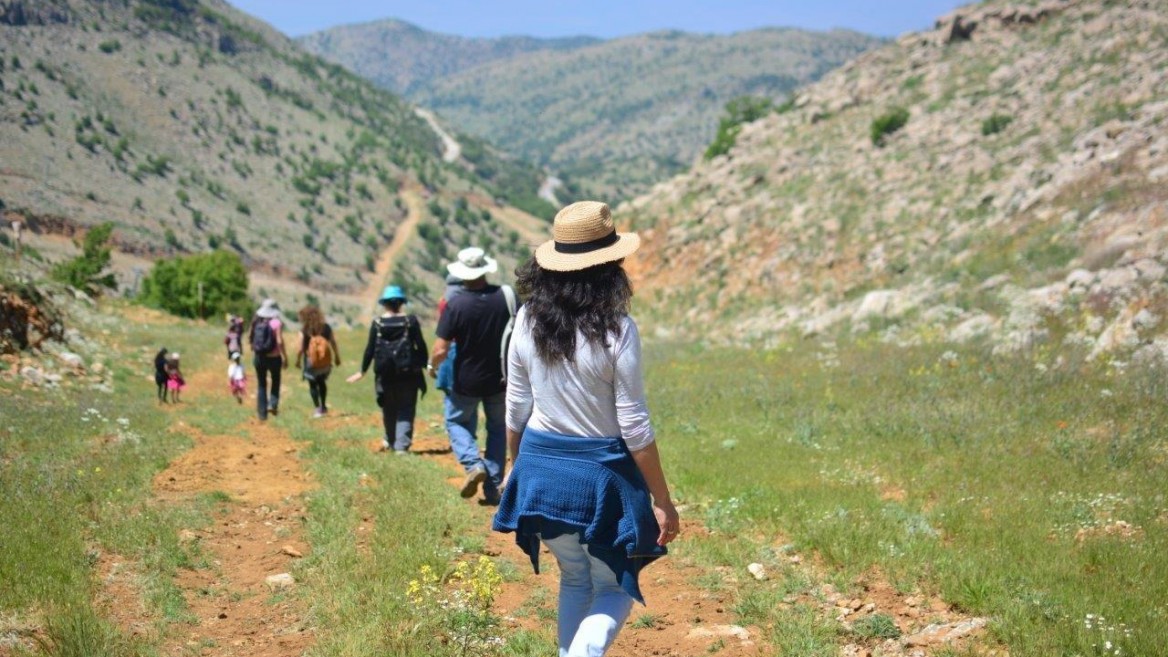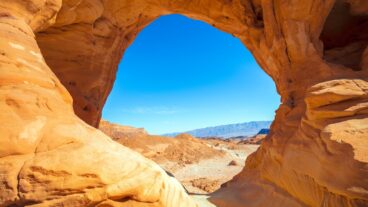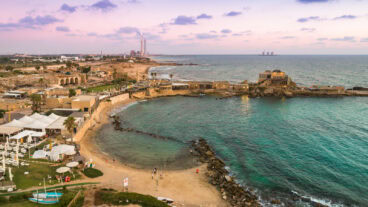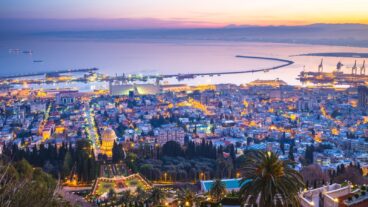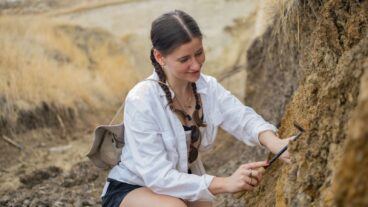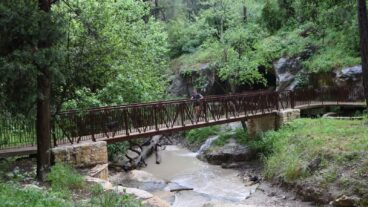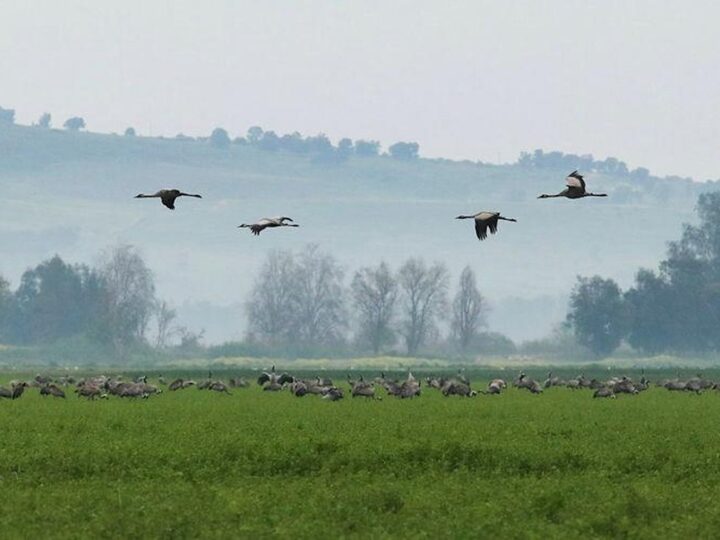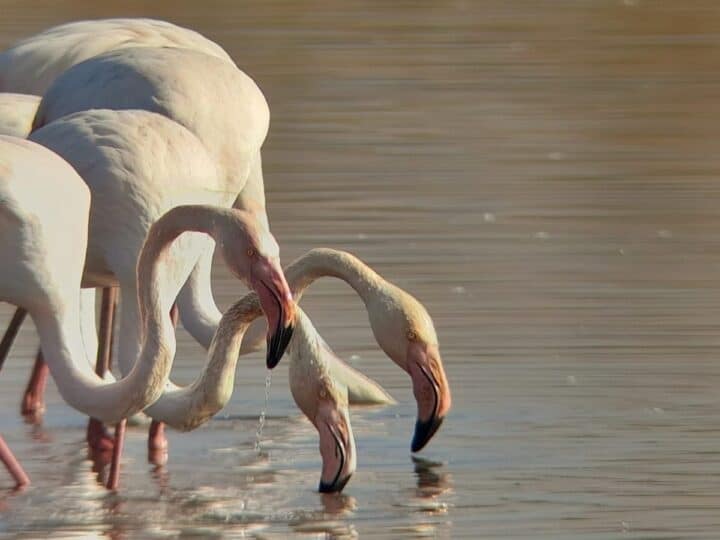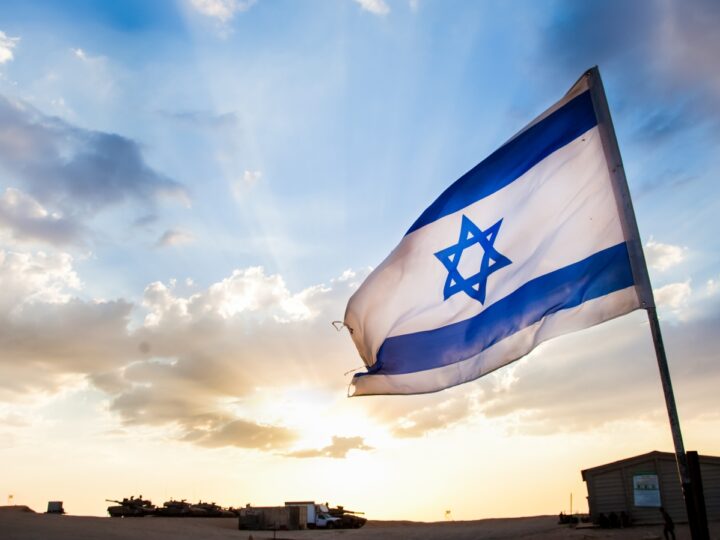Israeli summers are hot all over. So, if you’re planning on hiking, a shady forest or a wet and wild river stream might be your most comfortable options.
And the best place for both is in Israel’s mountainous north.
Before you strap on your boots and grab your hiking sticks, check out ISRAEL21c’s guide to the 15 best hikes in the north of the country.
Golan Heights
-
Nahal Snir (Snir Stream)
There are several ways to hike Nahal Snir in the Golan Heights: a 30- or 90-minute trail that goes through the water (unlike the dry desert canyons, Snir is wet year-round), complete with a few baby rapids; or a 15-minute wheelchair-accessible trail that runs through the Dag al HaDan fish restaurant, with tables set between the rivulets of the stream.
There’s access to a wading pool and even a cute little waterfall. Nahal Snir is on the Israel Trail and is part of the Hatsbani Nature Reserve, so there’s an entrance fee.
-
Banias
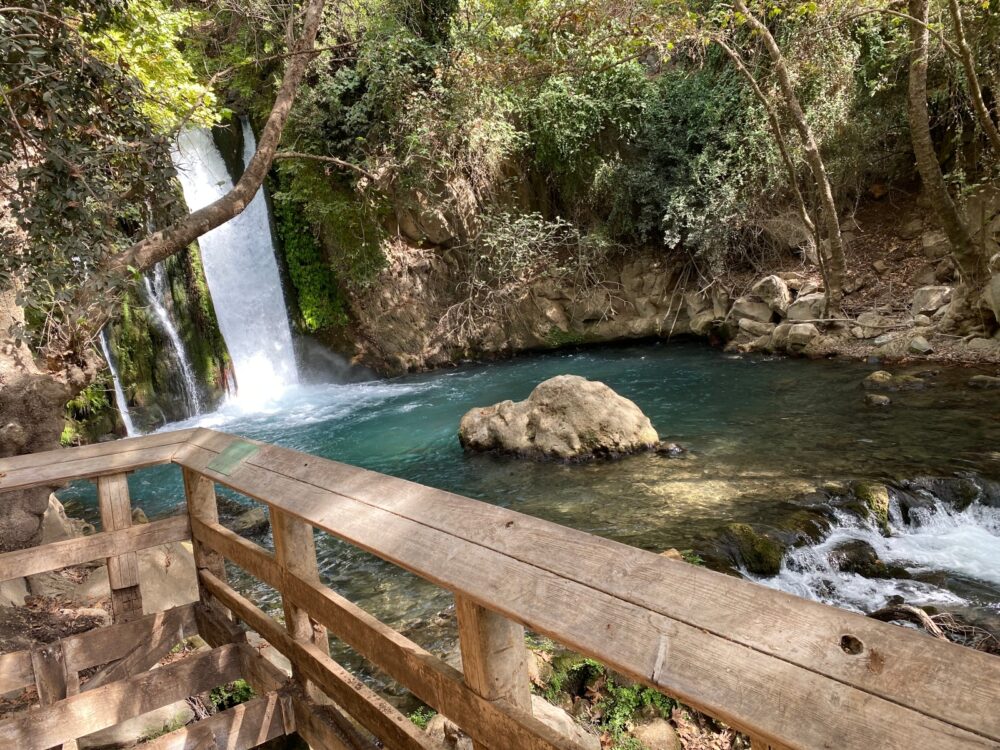
Featuring one of Israel’s most impressive waterfalls, the Banias Nature Reserve is a year-round delight. It’s relatively cool in the summer albeit not as intensely green as in the winter. You’ll hike to the soundtrack of the white-water rush.
Along the well-marked and heavily trafficked path you’ll pass archeological ruins and cross a picturesque suspended bridge. There’s a viewing platform for the falls, but for a longer walk, head to the Banias Springs (4 kilometers there and back), which is not as well known but just as pretty.
The site has Christian significance too, as the location where Peter told Jesus he was the Messiah. Also in the area: the Hermon Stream Reserve, where you can swim.
-
Nahal Zavitan and Nahal Yehudiya
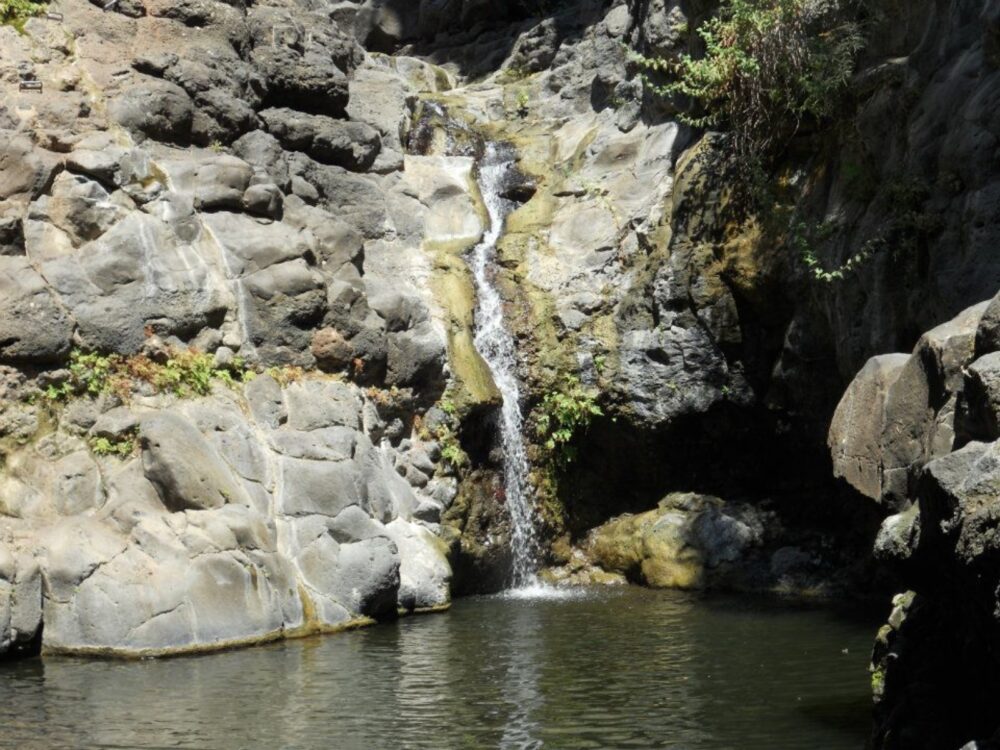
This classic water hike starts just outside Katzrin, the largest town in the Golan Heights. It’s a one-way trail, so you’ll need two cars; park one in the parking lot for Nahal Yehudiya. About a mile in you’ll reach the first swimming holes. After another mile, you’ll come to some even deeper pools surrounded by six-sided and five-sided basalt columns. This hike ends at the 92-foot-high Zavitan Waterfall. Total hiking distance: 6.5 kilometers (4 miles).
If you’re already in the area, come back for a walk in the Yehudiya, which also has pools and falls. Due to rockfalls from the canyon cliffs in recent years, the most popular section of the canyon has been closed to hikers and a new path that heads upstream allows access to the Yehudiya.
-
Nahal El Al
There are two waterfalls in this lovely Golan Heights trek. Families with kids can take the short walk to the Black Waterfall, a beautiful pool in a canyon made of black rock (hence the name).
But beware: there is a section that requires climbing down a series of handholds drilled into the rock.
If you continue further, you’ll reach the White Waterfall, which is not as serene as its black counterpart but has a bigger pool. The walk features a winding stream, wide-open fields and incredible views.
Best done with two cars so you don’t have to double back (it’s nearly 7 kilometers in each direction). Nahal El Al is a national park but there’s no entrance fee. You’ll find all of the seven species of plants mentioned in the Bible on this walk including pomegranates, grapes and figs.
-
Majrase
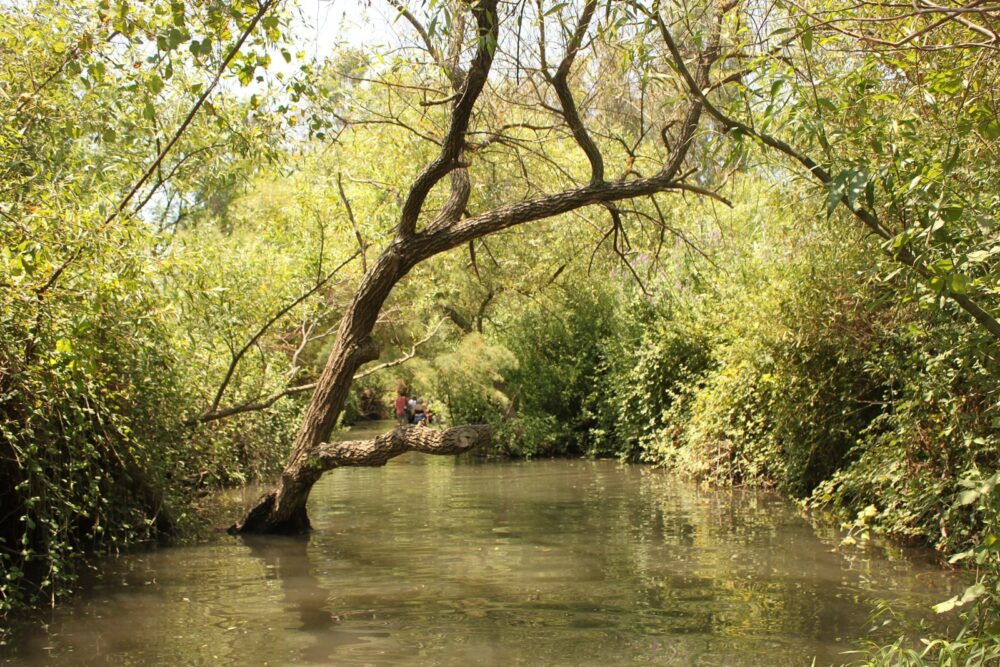
Another beautiful nature reserve in the Golan, the Majrase, located in the Beitha Nature Reserve, features waist-high water to wade through, but hikers who prefer not to get their boots or body wet can follow alongside on the stroller-friendly path paralleling the stream, set among bamboo, reeds and tall trees.
This is a short trail – only a kilometer long – but since it’s a national park, don’t forget to make a reservation before you arrive. Keep your eyes peeled and you might even see a turtle!
-
Tel Dan
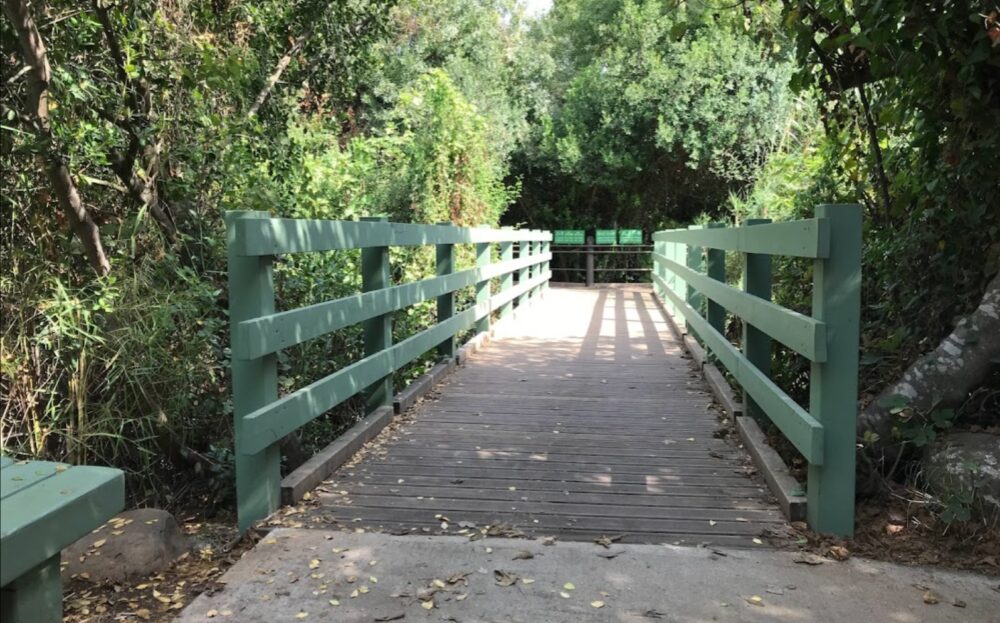
In biblical times, Dan was Israel’s northernmost region. Now it boasts the Tel Dan Nature Reserve where you can hike through ancient history, splash in a rushing river and enjoy the lush greenery.
There are waterfalls and wading pools and, for history buffs, the “tel” from which the area gets its name – an archeological excavation of the ancient city plus a pretty flour mill from the British Mandate period.
The hike is just 2 kilometers long but if you like water, you’ll spend much more time than the short distance suggests. Just be aware that the Dan’s water comes from melting snow on the Golan Heights, so it can be frigid, even in the summer. There are two trails – the long one just described, and a shorter loop that’s wheelchair-accessible.
-
Nahal Jilaboun
North of Katzrin is the Jilaboun Stream, marked by some impressive vertical rock walls, pools and waterfalls.
The way into the canyon passes through Kfar Devora, where a Talmudic-era lintel was found. The 39-foot Devora Waterfall can be found just after the village (there are handholds drilled into the rocks to get down to it).
Hike through the streambed for about a mile until you reach the 134-foot Jilaboun Waterfall. At the end of the hike there’s the “Officer’s Pool” (a concrete swimming pool that was used by the Syrians until 1967). The Hiking in the Holyland website says this hike “feels like a tropical jungle,” but without the humidity.
Galilee
-
Nahal Amud
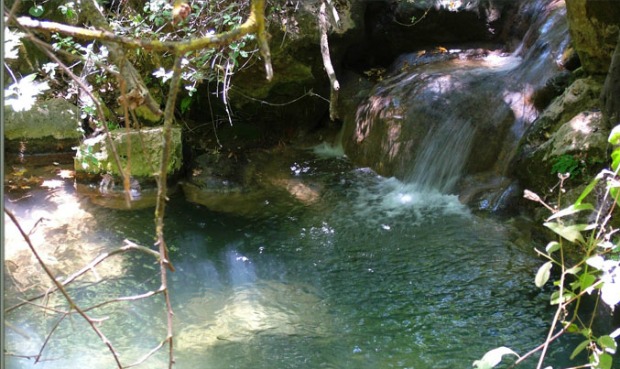
Nahal Amud (Amud Stream Nature Reserve) runs from Mount Meron in the west toward the Sea of Galilee in the east. You can walk it in either direction; starting at Meron means more downhill and is generally preferred.
The stream, which parallels the Israel Trail, is gorgeous and shaded (except for the initial descent), but the highlight is the water in which you can take a relaxing dip. There are several ancient flour mills along the path, as well.
If you have two cars, park one near the cemetery in Safed and climb out of the stream there. Depending on how far you go, the hike could last anywhere from two to five hours. Nahal Amud is part of the three-day “Sea to Sea” (Hebrew: “Yam Le-Yam”) trek that continues all the way to the Mediterranean Sea.
-
Nahal Ayun
Ayun Stream Nature Reserve sports not one, not two, but three waterfalls! Some have cool pools where you can dip your feet or splash around. The largest has a supposedly dry viewing platform, but the spray from the falls will likely soak you (and your camera).
The trail is 2.5 kilometers long but one-way only. The entrance is near Israel’s northernmost town of Metulla. The Tahana Waterfall used to power an old flour mill. There are steps and “tree tunnels” where you have to duck along the path. The platform at the final fall, the Tanur, has lovely views of vineyards and rolling hills. There’s a separate parking lot for the less intrepid who just want to see the Tanur and skip the rest of the hike.
-
Nahal Kziv/Montfort Castle
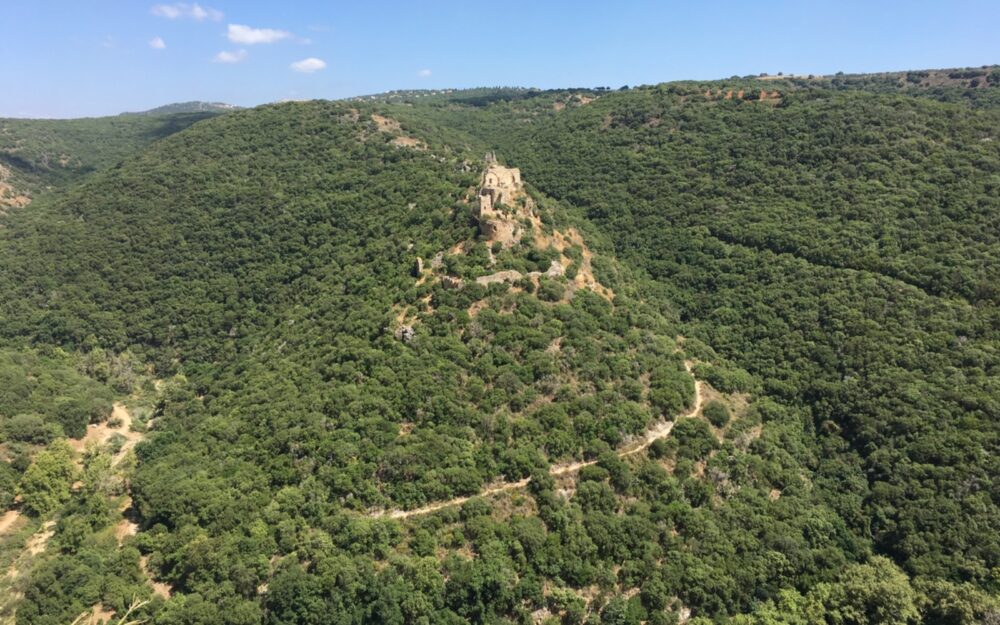
What’s cooler than a hike along a wet and wild stream? A stream with a castle as a reward! This is a long trail – it’s at least 10 kilometers (6.2 miles) depending on how you hike it – and starts near the village of Mitzpeh Hila.
You’ll pass through a “cave tunnel” before you arrive at Montfort, the ruins of a castle dating back to the Crusader era. Don’t miss the views from the top. Then continue on the red trail towards Nahal Kziv, where the thick tree canopy keeps things comfortable even in the height of the summer.
You’ll pass pools of fish and little waterfalls. Return on the black trail but get ready – it’s a steep climb back to the parking lot. You can stay out of the water while hiking or bring water shoes for a refreshing dip.
-
Hula Lake
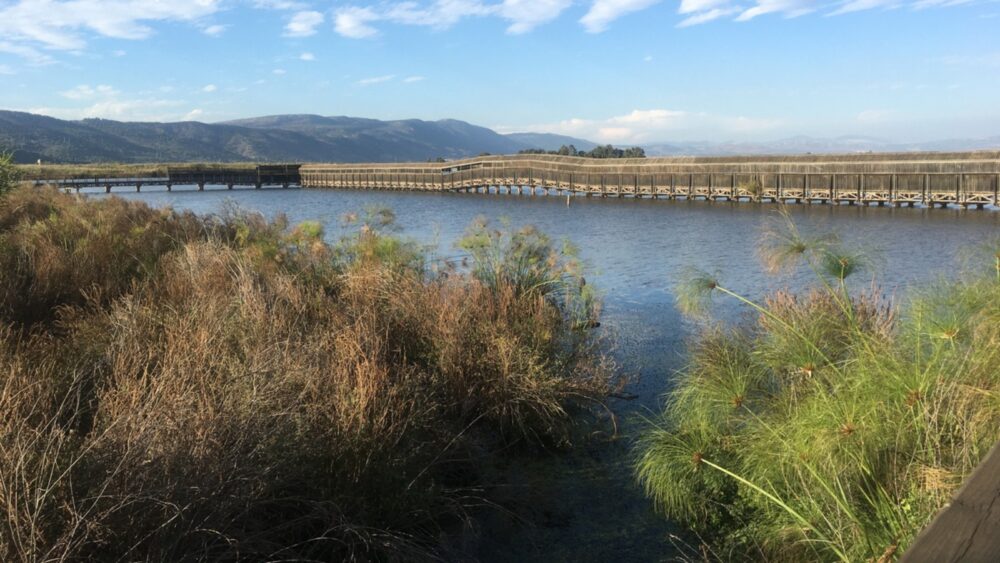
The Hula was originally a lake that was drained by the Zionist pioneers to eradicate the area of malaria-carrying mosquitos. It has since been restored to its original watery self. That’s been a boon for the thousands of migrating birds who visit every winter; the Agamon Hula Park is one of the top 10 birdwatching locations in the world.
The birds – including magnificent cranes and pelicans – attract thousands of human visitors every winter, but the nature is worth visiting at any time of year. The path around the lake is 8.5 kilometers (5.3 miles) and you can walk, cycle or rent a motorized golf cart. There are observation points scattered throughout. You’ll spot turtles, beavers and water buffalo. Don’t forget to make a reservation.
-
Mount Tabor
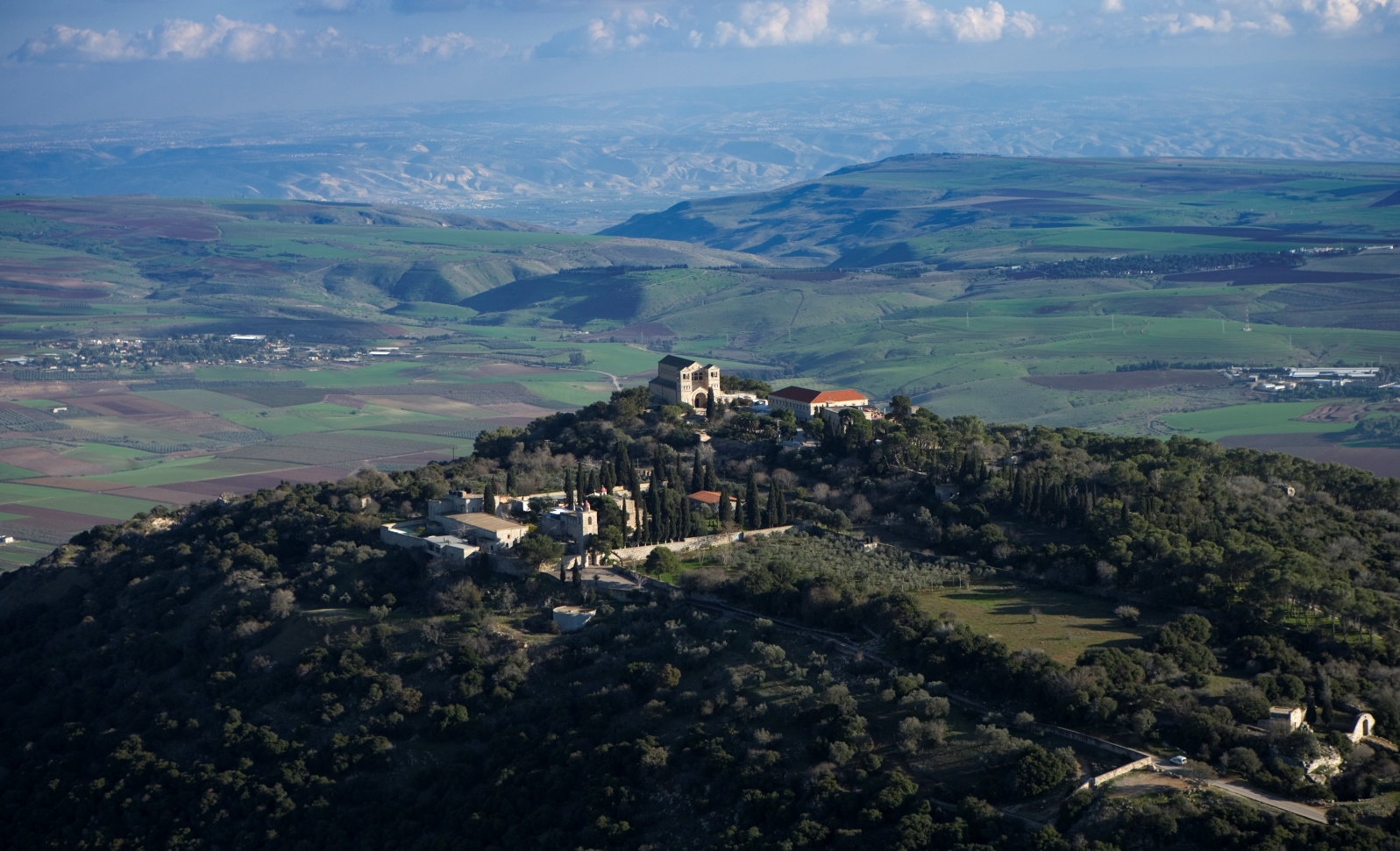
Bible lovers will enjoy hiking Mount Tabor west of Nazareth, where Deborah the prophetess famously fought alongside General Barak against the Canaanite King Jabin and his head of army, Sisera. You can hike the tough 6-kilometer trail straight up from the base or drive your car to the top where there’s a shorter, mostly flat loop starting from the Church of Transfiguration, the traditional location was Jesus was transfigured with bright rays of light. (The current church was built in 1924 by the Franciscans.)
There are caves near the top and part of the hike is along the Israel Trail. On a clear day you can see the snowy peaks of Mount Hermon.
-
Mount Gilboa
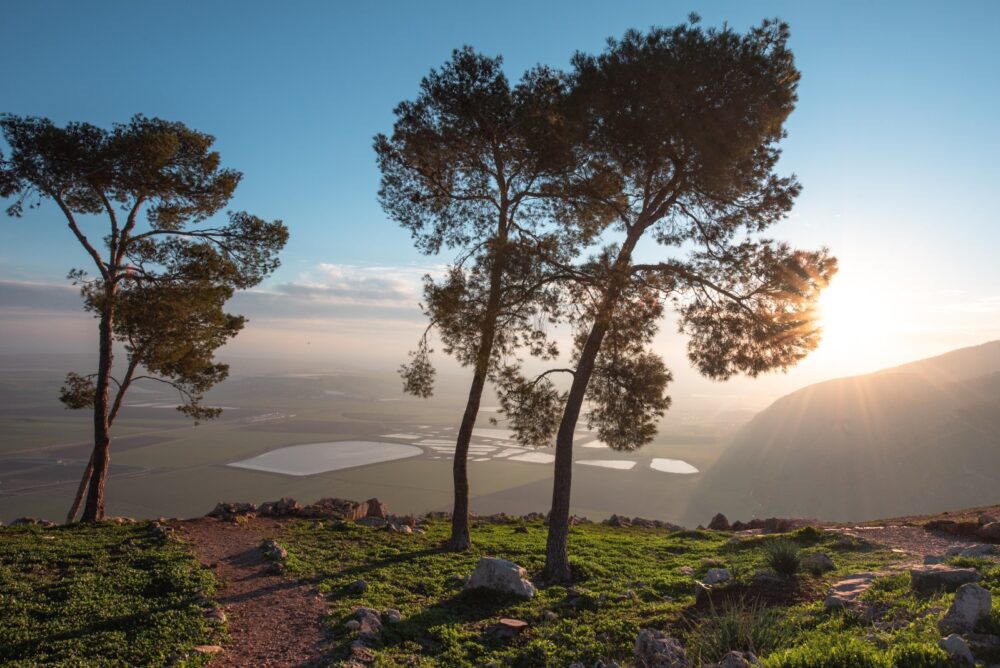
The Gilboa rises some 500 meters (1,640 feet) above the plains of the Jezreel Valley for fantastic views of the Sea of Galilee to the east and Haifa to the west. Mount Gilboa also has some biblical history – it was the setting of a fierce battle between the Philistines and the Israelites led by King Saul, who fell on his sword to avoid being captured by the enemy.
There are two short loop trails of 1 and 2 kilometers. The first runs along the edge of the cliff; the second goes down along the ridge. You’ll be treated to gorgeous irises in the spring, but the views are spectacular at any time of year.
For the more ambitious, start at Emek HaMayanot (Valley of Springs), climb to the top and back down again. The 15-kilometer (9.3-mile) round-trip includes ascents with ladders.
-
Nahal Betzet

Looking for a super-shady hike in the height of summer? Nahal Betzet is just the ticket. Plus, it parallels a flowing stream with plenty of opportunities to take a dunk in a shallow pool.
Start near the village of Ya’ara at a water pumping station and continue to the end point at Kibbutz Eilon. This fabulous walk is relatively unknown, so don’t be surprised if you encounter more cows than people. There’s even a pool with a small waterfall (the pool here is deep enough to swim in).
The hike is all of 3 kilometers (less than 2 miles), but you can shorten it by starting at Kibbutz Eilon, a route which is stroller- and wheelchair-friendly. For a 6 km hike (albeit without most of the water fun), set your Waze for the Daniela Ruins and end at Eilon.
-
Yam Le-Yam
If you have three to five days, the Sea to Sea (Yam Le-Yam) trek is a rite of passage for many young Israelis. You can hike it either from the Mediterranean to the Sea of Galilee or in the opposite direction. It passes through Nahal Amud and past Montfort Castle. Some hikers will camp out along the way; others will opt to overnight at a local guesthouse.
For the most popular route, start near Nahariya. After you leave the coastal plain and Montfort, you’ll reach the villages of Fassuta, Elkosh and Hurfeish on the way toward Mount Meron before descending towards the Sea of Galilee, ending up near Kibbutz Ginosar.
Yam Le-Yam runs 75 km (46.6 miles) and climbs some 1,200 meters (three-quarters of a mile) from sea level before descending to minus-400 meters at the end. Water isn’t too much of a problem as the trail passes natural springs each day and you’re close enough to villages to stock up on supplies.




